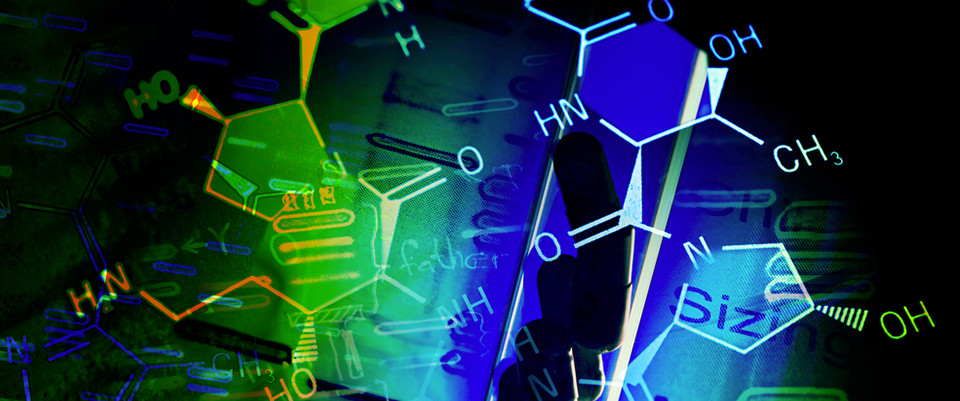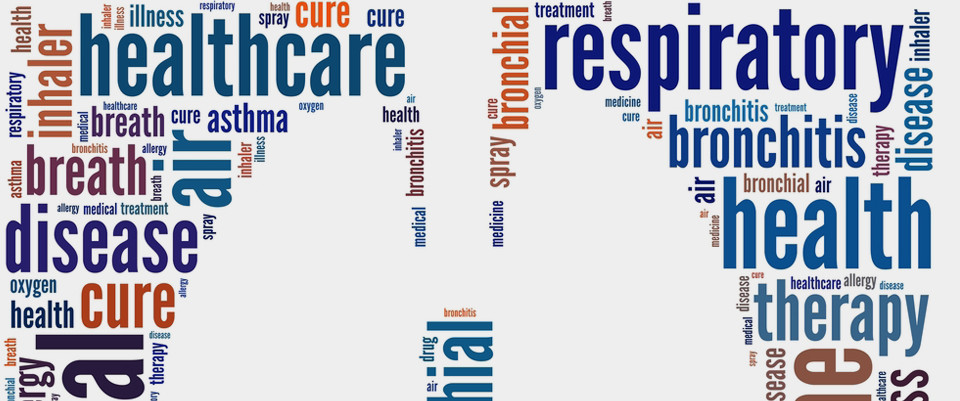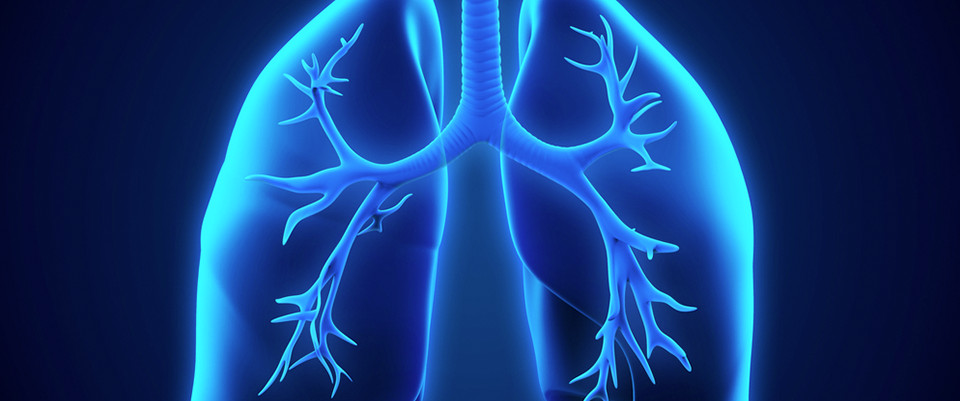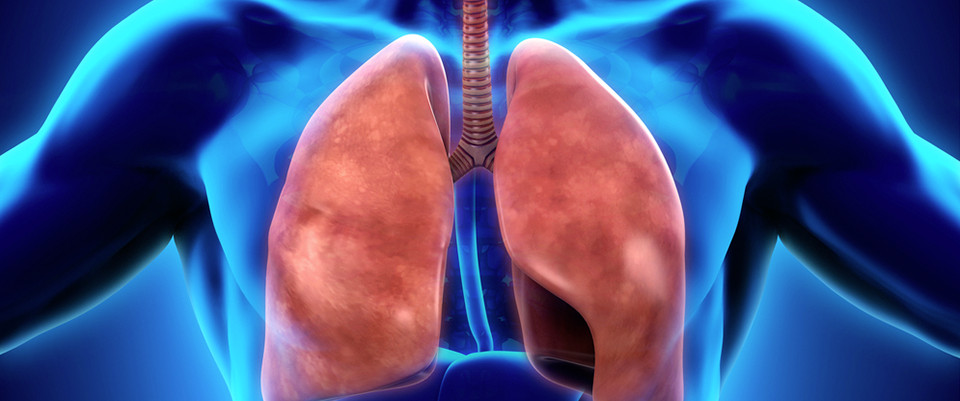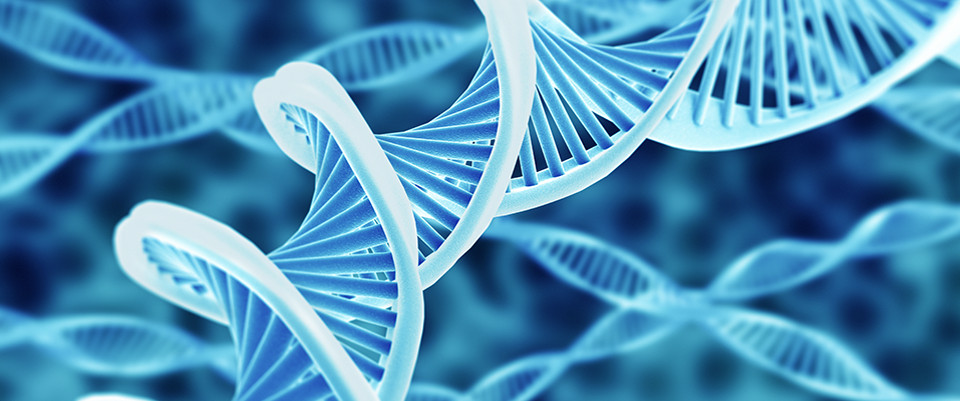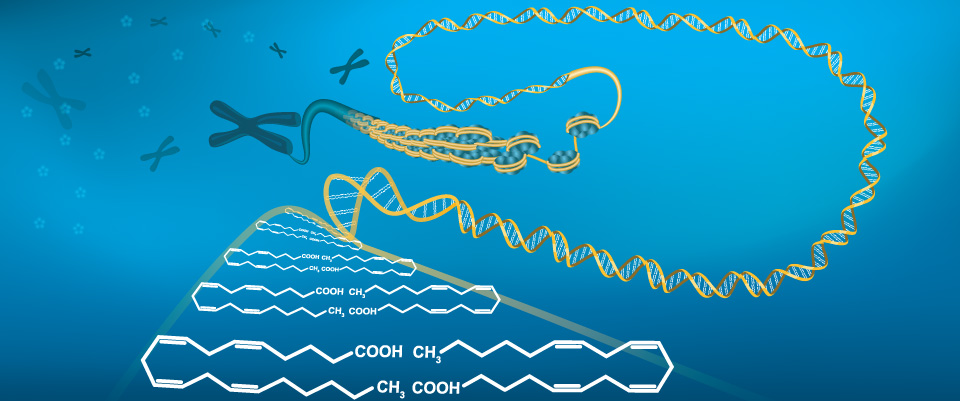PubMed
The exposome and liver disease - how environmental factors affect liver health
J Hepatol. 2023 Mar 6:S0168-8278(23)00166-6. doi: 10.1016/j.jhep.2023.02.034. Online ahead of print.ABSTRACTSince the initial development of the exposome concept, much of the effort has been devoted to the characterization of the exposome through analytical, epidemiological, and toxicological/mechanistical studies. There is now an urgent need to link the exposome to human diseases and to include exposomics in the characterization of environment-linked pathologies together with genomics and other omics. Liver diseases are particularly well suited for such studies since major functions of this organ include the detection, detoxification, and elimination of xenobiotics as well as inflammatory responses. It is well known that several liver diseases are associated with 1) addictive behaviors such as alcohol consumption, smoking, and to a certain extent dietary imbalance and obesity, 2) viral and parasitic infections, 3) exposure to toxins and occupational chemicals. Recent studies indicated that environmental exposures were also significantly associated with liver diseases, and these include air pollution (particulate matter and volatile chemicals), contaminants such as polyaromatic hydrocarbons, bisphenol A and per-and poly-fluorinated substances, and physical stressors such as radiation. Furthermore, a major role is also played by the microbiome metabolites and the "Gut-Liver" axis. Exposomics is poised to play a major role in the field of liver pathology. Methodological advances such as the exposomics-metabolomics framework, genomics and epigenomics signatures of risk factors and cross-species biological pathway analysis should further delineate the impact of the exposome on the liver and open the way for improved prevention, new biomarkers of exposure and effects, and additional targets for therapies.PMID:36889360 | DOI:10.1016/j.jhep.2023.02.034
Volatile secondary metabolome and transcriptome analysis reveals distinct regulation mechanism of aroma biosynthesis in Syringa oblata and S. vulgaris
Plant Physiol Biochem. 2023 Mar 2;196:965-973. doi: 10.1016/j.plaphy.2023.03.003. Online ahead of print.ABSTRACTLilacs have high ornamental value due to their strong aroma. However, the molecular regulatory mechanisms of aroma biosynthesis and metabolism in lilac were largely unclear. In this study, two varieties with distinct aroma, Syringa oblata 'Zi Kui' (faint aroma) and Syringa vulgaris 'Li Fei' (strong aroma), were used for exploring the regulation mechanism of aroma difference. Via GC-MS analysis, a total of 43 volatile components were identified. Terpene volatiles was the most abundant volatiles constituting the aroma of two varieties. Notably, 3 volatile secondary metabolites were unique in 'Zi Kui' and 30 volatile secondary metabolites were unique in 'Li Fei'. Then, a transcriptome analysis was performed to clarify the regulation mechanism of aroma metabolism difference between these two varieties, and identified 6411 differentially expressed genes (DEGs). Interestingly, ubiquinone and other terpenoid-quinone biosynthesis genes were significantly enriched in DEGs. We further conducted a correlation analysis between the volatile metabolome and transcriptome and found that TPS, GGPPS, and HMGS genes might be the key contributors to the differences in floral fragrance composition between the two lilac varieties. Our study improves the understanding in the regulation mechanism of Lilac aroma and would help improve the aroma of ornamental crops by metabolic engineering.PMID:36889235 | DOI:10.1016/j.plaphy.2023.03.003
Stress response and tolerance mechanisms of NaHCO<sub>3</sub> exposure based on biochemical assays and multi-omics approach in the liver of crucian carp (Carassius auratus)
Ecotoxicol Environ Saf. 2023 Mar 6;253:114633. doi: 10.1016/j.ecoenv.2023.114633. Online ahead of print.ABSTRACTThe development and utilization of saline-alkaline water, an important backup resource, has received widespread attention. However, the underuse of saline-alkaline water, threatened by the single species of saline-alkaline aquaculture, seriously affects the development of the fishery economy. In this work, a 30-day NaHCO3 stress experimental study combined with analyses of untargeted metabolomics, transcriptome, and biochemical approaches was conducted on crucian carp to provide a better understanding of the saline-alkaline stress response mechanism in freshwater fish. This work revealed the relationships among the biochemical parameters, endogenous differentially expressed metabolites (DEMs), and differentially expressed genes (DEGs) in the crucian carp livers. The biochemical analysis showed that NaHCO3 exposure changed the levels of several physiological parameters associated with the liver, including antioxidant enzymes (SOD, CAT, GSH-Px), MDA, AKP, and CPS. According to the metabolomics study, 90 DEMs are involved in various metabolic pathways such as ketone synthesis and degradation metabolism, glycerophospholipid metabolism, arachidonic acid metabolism, and linoleic acid metabolism. In addition, transcriptomics data analysis showed that a total of 301 DEGs were screened between the control group and the high NaHCO3 concentration group, of which 129 up-regulated genes and 172 down-regulated genes. Overall, NaHCO3 exposure could cause lipid metabolism disorders and induce energy metabolism imbalance in the crucian carp liver. Simultaneously, crucian carp might regulate its saline-alkaline resistance mechanism by enhancing the synthesis of glycerophospholipid metabolism, ketone bodies, and degradation metabolism, at the same time increasing the vitality of antioxidant enzymes (SOD, CAT, GSH-Px) and nonspecific immune enzyme (AKP). Herein, all results will provide new insights into the molecular mechanisms underlying the stress responses and tolerance to saline-alkaline exposure in crucian carp.PMID:36889228 | DOI:10.1016/j.ecoenv.2023.114633
Sequential isolation of metabolites and lipids from a single sample to achieve multiomics by using TRIzol reagent
Talanta. 2023 Mar 4;258:124416. doi: 10.1016/j.talanta.2023.124416. Online ahead of print.ABSTRACTSimultaneous extraction of various types of biomolecule from a single sample can be beneficial for multiomics studies of unique specimens. An efficient and convenient sample preparation approach must be developed that can comprehensively isolate and extract biomolecules from one sample. TRIzol reagent is widely used in biological studies for DNA, RNA, and protein isolation. This study evaluated the feasibility of using TRIzol reagent for the simultaneous isolation of not only DNA, RNA, and proteins but also metabolites and lipids from a single sample. Through the comparison of known metabolites and lipids obtained using the conventional methanol (MeOH) and methyl-tert-butyl ether (MTBE) extraction methods, we determined the presence of metabolites and lipids in the supernatant during TRIzol sequential isolation. Finally, we performed untargeted metabolomics and lipidomics to examine metabolite and lipid alterations associated with the jhp0417 mutation in Helicobacter pylori by using the TRIzol sequential isolation protocol and MeOH and MTBE extraction methods. Metabolites and lipids with significant differences isolated using the TRIzol sequential isolation protocol were consistent with those obtained using the conventional MeOH and MTBE extraction methods. These results indicated that TRIzol reagent can be used to simultaneously isolate metabolites and lipids from a single sample. Thus, TRIzol reagent can be used in biological and clinical research, especially in multiomics studies.PMID:36889188 | DOI:10.1016/j.talanta.2023.124416
Loss of peroxisomal NAD kinase 3 (NADK3) affects photorespiration metabolism in Arabidopsis
J Plant Physiol. 2023 Mar 2;283:153950. doi: 10.1016/j.jplph.2023.153950. Online ahead of print.ABSTRACTNicotinamide adenine dinucleotides (NAD+ and NADP+) are electron mediators involved in various metabolic pathways. NADP(H) are produced by NAD kinase (NADK) through the phosphorylation of NAD(H). The Arabidopsis NADK3 (AtNADK3) is reported to preferentially phosphorylate NADH to NADPH and is localized in the peroxisome. To elucidate the biological function of AtNADK3 in Arabidopsis, we compared metabolites of nadk1, nadk2 and nadk3 Arabidopsis T-DNA inserted mutants. Metabolome analysis revealed that glycine and serine, which are intermediate metabolites of photorespiration, both increased in the nadk3 mutants. Plants grown for 6 weeks under short-day conditions showed increased NAD(H), indicating a decrease in the phosphorylation ratio in the NAD(P)(H) equilibrium. Furthermore, high CO2 (0.15%) treatment induced a decrease in glycine and serine in nadk3 mutants. The nadk3 showed a significant decrease in post-illumination CO2 burst, suggesting that the photorespiratory flux was disrupted in the nadk3 mutant. In addition, an increase in CO2 compensation points and a decrease in CO2 assimilation rate were observed in the nadk3 mutants. These results indicate that the lack of AtNADK3 causes a disruption in the intracellular metabolism, such as in amino acid synthesis and photorespiration.PMID:36889102 | DOI:10.1016/j.jplph.2023.153950
Cohort profile: Celiac disease genomic, environmental, microbiome and metabolome study; a prospective longitudinal birth cohort study of children at-risk for celiac disease
PLoS One. 2023 Mar 8;18(3):e0282739. doi: 10.1371/journal.pone.0282739. eCollection 2023.ABSTRACTThe Celiac Disease Genomic, Environmental, Microbiome and Metabolomic (CDGEMM) study is an international prospective birth cohort in children at-risk of developing celiac disease (CD). The CDGEMM study has been designed to take a multi-omic approach to predicting CD onset in at-risk individuals. Participants are required to have a first-degree family member with biopsy diagnosed CD and must be enrolled prior to the introduction of solid food. Participation involves providing blood and stool samples longitudinally over a period of five years as well as answering questionnaires related to the participant, their family, and environment. Recruitment and data collection have been ongoing since 2014. As of 2022 we have a total of 554 participants and the average age of the cohort is 56.4 months. A total of 54 participants have developed positive antibodies for CD and 31 have confirmed CD. Approximately 80% of the 54 participants with CD have developed it by 3 years of age. To date we have identified several microbial strains, pathways, and metabolites occurring in increased abundance and detected before CD onset, which have previously been linked to autoimmune and inflammatory conditions while others occurred in decreased abundance before CD onset and are known to have anti-inflammatory effects. Our ongoing analysis includes expanding our metagenomic and metabolomic analyses, evaluating environmental risk factors linked to CD onset, and mechanistic studies investigating how alterations in the microbiome and metabolites may protect against or contribute to CD development.PMID:36888627 | DOI:10.1371/journal.pone.0282739
Unique plasma metabolite signature for adolescents with Klinefelter syndrome reveals altered fatty acid metabolism
Endocr Connect. 2023 Mar 1:EC-22-0523. doi: 10.1530/EC-22-0523. Online ahead of print.ABSTRACTConditions related to cardiometabolic disease, including metabolic syndrome and type 2 diabetes, are common among men with Klinefelter syndrome (KS).The molecular mechanisms underlying this aberrant metabolism in KS are largely unknown, although there is an assumption that chronic testosterone deficiency plays a role. This cross-sectional study compared plasma metabolites in 31 pubertal adolescent males with KS to 32 controls of similar age (14 ± 2 yrs), pubertal stage, and body mass index z-score (0.1 ± 1.2), and then between testosterone treated (n=16) and untreated males with KS. The plasma metabolome in males with KS was distinctly different from controls, with 22% of measured metabolites having a differential abundance and seven metabolites nearly completely separating KS from controls (AUC>0.9, p<0.0001). Multiple saturated free fatty acids were higher in KS while mono- and polyunsaturated fatty acids were lower, and the top significantly enriched pathway was mitochondrial ß-oxidation of long-chain saturated fatty acids (enrichment ratio 16, p<0.0001). In contrast, there were no observed differences in metabolite concentrations between testosterone-treated and untreated individuals with KS. In conclusion, the plasma metabolome profile in adolescent males with KS is distinctly different from males without KS independent of age, obesity, pubertal development, or testosterone treatment status, and is suggestive of differences in mitochondrial ß-oxidation.PMID:36884262 | DOI:10.1530/EC-22-0523
Freshwater crustacean exposed to active pharmaceutical ingredients: ecotoxicological effects and mechanisms
Environ Sci Pollut Res Int. 2023 Mar 8. doi: 10.1007/s11356-023-26169-0. Online ahead of print.ABSTRACTConcerns over the ecotoxicological effects of active pharmaceutical ingredients (APIs) on aquatic invertebrates have been raised in the last decade. While numerous studies have reported the toxicity of APIs in invertebrates, no attempt has been made to synthesize and interpret this dataset in terms of different exposure scenarios (acute, chronic, multigenerational), multiple crustacean species, and the toxic mechanisms. In this study, a thorough literature review was performed to summarize the ecotoxicological data of APIs tested on a range of invertebrates. Therapeutic classes including antidepressants, anti-infectives, antineoplastic agents, hormonal contraceptives, immunosuppressants, and neuro-active drugs exhibited higher toxicity to crustaceans than other API groups. The species sensitivity towards APIs exposure is compared in D. magna and other crustacean species. In the case of acute and chronic bioassays, ecotoxicological studies mainly focus on the apical endpoints including growth and reproduction, whereas sex ratio and molting frequency are commonly used for evaluating the substances with endocrine-disrupting properties. The multigenerational and "Omics" studies, primarily transcriptomics and metabolomics, were confined to a few API groups including beta-blocking agents, blood lipid-lowing agents, neuroactive agents, anticancer drugs, and synthetic hormones. We emphasize that in-depth studies on the multigenerational effects and the toxic mechanisms of APIs on the endocrine systems of freshwater crustacean are warranted.PMID:36884171 | DOI:10.1007/s11356-023-26169-0
The Assembly of Bacteria Living in Natural Environments Shapes Neuronal Integrity and Behavioral Outputs in Caenorhabditis elegans
mBio. 2023 Mar 8:e0340222. doi: 10.1128/mbio.03402-22. Online ahead of print.ABSTRACTBacterivore nematodes are the most abundant animals in the biosphere, largely contributing to global biogeochemistry. Thus, the effects of environmental microbes on the nematodes' life-history traits are likely to contribute to the general health of the biosphere. Caenorhabditis elegans is an excellent model to study the behavioral and physiological outputs of microbial diets. However, the effects of complex natural bacterial assemblies have only recently been reported, as most studies have been carried out with monoxenic cultures of laboratory-reared bacteria. Here, we quantified the physiological, phenotypic, and behavioral traits of C. elegans feeding on two bacteria that were coisolated with wild nematodes from a soil sample. These bacteria were identified as a putative novel species of Stenotrophomonas named Stenotrophomonas sp. strain Iso1 and a strain of Bacillus pumilus designated Iso2. The distinctive behaviors and developmental patterns observed in animals fed with individual isolates changed when bacteria were mixed. We studied in more depth the degeneration rate of the touch circuit of C. elegans and show that B. pumilus alone is protective, while the mix with Stenotrophomonas sp. is degenerative. The analysis of the metabolite contents of each isolate and their combination identified NAD+ as being potentially neuroprotective. In vivo supplementation shows that NAD+ restores neuroprotection to the mixes and also to individual nonprotective bacteria. Our results highlight the distinctive physiological effects of bacteria resembling native diets in a multicomponent scenario rather than using single isolates on nematodes. IMPORTANCE Do behavioral choices depend on animals' microbiota? To answer this question, we studied how different bacterial assemblies impact the life-history traits of the bacterivore nematode C. elegans using isolated bacteria found in association with wild nematodes in Chilean soil. We identified the first isolate, Iso1, as a novel species of Stenotrophomonas and isolate Iso2 as Bacillus pumilus. We find that worm traits such as food choice, pharyngeal pumping, and neuroprotection, among others, are dependent on the biota composition. For example, the neurodegeneration of the touch circuit needed to sense and escape from predators in the wild decreases when nematodes are fed on B. pumilus, while its coculture with Stenotrophomonas sp. eliminates neuroprotection. Using metabolomics analysis, we identify metabolites such as NAD+, present in B. pumilus yet lost in the mix, as being neuroprotective and validated their protective effects using in vivo experiments.PMID:36883821 | DOI:10.1128/mbio.03402-22
Muscle stem cells contribute to long-term tissue repletion following surgical sepsis
J Cachexia Sarcopenia Muscle. 2023 Mar 8. doi: 10.1002/jcsm.13214. Online ahead of print.ABSTRACTBACKGROUND: Over the past decade, advances in sepsis identification and management have resulted in decreased sepsis mortality. This increase in survivorship has highlighted a new clinical obstacle: chronic critical illness (CCI), for which there are no effective treatment options. Up to half of sepsis survivors suffer from CCI, which can include multi-organ dysfunction, chronic inflammation, muscle wasting, physical and mental disabilities, and enhanced frailty. These symptoms prevent survivors from returning to regular day-to-day activities and are directly associated with poor quality of life.METHODS: Mice were subjected to cecal ligation and puncture (CLP) with daily chronic stress (DCS) as an in vivo model to study sepsis late-effects/sequelae on skeletal muscle components. Longitudinal monitoring was performed via magnetic resonance imaging, skeletal muscle and/or muscle stem cell (MuSCs) assays (e.g., post-necropsy wet muscle weights, minimum Feret diameter measurements, in vitro MuSC proliferation and differentiation, number of regenerating myofibres and numbers of Pax7-positive nuclei per myofibre), post-sepsis whole muscle metabolomics and MuSC isolation and high-content transcriptional profiling.RESULTS: We report several findings supporting the hypothesis that MuSCs/muscle regeneration are critically involved in post-sepsis muscle recovery. First, we show that genetic ablation of muscle stem cells (MuSCs) impairs post-sepsis muscle recovery (maintenance of 5-8% average lean mass loss compared with controls). Second, we observe impaired MuSCs expansion capacity and morphological defects at 26 days post-sepsis compared with control MuSCs (P < 0.001). Third, when subjected to an experimental muscle injury, sepsis-recovered mice exhibited evidence of impaired muscle regeneration compared with non-septic mice receiving the same muscle injury (CLP/DCS injured mean minimum Feret is 92.1% of control injured, P < 0.01). Fourth, we performed a longitudinal RNA sequencing study on MuSCs isolated from post-sepsis mice and found clear transcriptional differences in all post-sepsis samples compared with controls. At Day 28, CLP/DCS mice satellite cells have multiple altered metabolic pathways, such as oxidative phosphorylation, mitochondrial dysfunction, sirtuin signalling and oestrogen receptor signalling, compared with controls (P < 0.001).CONCLUSIONS: Our data show that MuSCs and muscle regeneration are required for effective post-sepsis muscle recovery and that sepsis triggers morphological, functional, and transcriptional changes in MuSCs. Moving forward, we strive to leverage a more complete understanding of post-sepsis MuSC/regenerative defects to identify and test novel therapies that promote muscle recovery and improve quality of life in sepsis survivors.PMID:36883680 | DOI:10.1002/jcsm.13214
Polyacrylamide gel as a new embedding medium for the enhancement of metabolite MALDI imaging
Chem Commun (Camb). 2023 Mar 8. doi: 10.1039/d2cc07075h. Online ahead of print.ABSTRACTIn this study, polyacrylamide gel (PAAG) was successfully used as a new embedding medium to provide the more effective maintenance of biological tissues during the sectioning process, enhancing the tissue imaging of metabolites via matrix-assisted laser desorption/ionization mass spectrometry imaging (MALDI-MSI). Herein, PAAG, agarose, gelatin, optimal cutting temperature compound (OCT), and ice media were used to embed rat liver and Atlantic salmon (Salmo salar) eyeball samples. These embedded tissues were then sectioned into thin slices and thaw-mounted on conductive microscope glass slides for MALDI-MSI detection to evaluate the embedding effects. The results showed that PAAG embedding has characteristics superior to those of commonly-used embedding media (e.g., agarose, gelatin, OCT, and ice) with the advantages of one-step operation without heating, a better performance of morphology maintenance, the absence of PAAG polymer-ion-related interference below m/z 2000, and the more efficient in situ ionization of metabolites, providing a significant enhancement of both the numbers and intensities of the metabolite ion signals. Our study demonstrates the potential of PAAG embedding as a standard practice for metabolite MALDI tissue imaging, which will lead to an expanded application scope of MALDI-MSI.PMID:36883606 | DOI:10.1039/d2cc07075h
High-performance liquid chromatography-mass spectrometry-based metabolic profiling of adult growth hormone deficiency
J Clin Endocrinol Metab. 2023 Mar 8:dgad129. doi: 10.1210/clinem/dgad129. Online ahead of print.ABSTRACTCONTEXT: Adult growth hormone deficiency (AGHD) is at increased risk of metabolic syndrome. Metabolic profiles in AGHD patients were insufficiently evaluated.PURPOSE: To explore the serum metabolite profiles by metabolomics analysis and assess potential metabolites associated with recombinant human growth hormone (rhGH) treatment.METHODS: Thirty-one AGHD patients and 31 healthy controls were enrolled. Untargeted ultra-performance liquid chromatography-coupled mass spectroscopy was conducted in all patients and controls at baseline and during 12 months of rhGH treatment in eleven AGHD patients. Data were processed by principal component analysis, variable importance in projection scoring, orthogonal partial least squares-discriminant analysis, and MetaboAnalyst 5.0. We further explored the associations between metabolites and clinical parameters.RESULTS: Metabolomics indicated a distinct metabolic pattern between AGHD and healthy controls. The perturbed pathways mainly include the biosynthesis of unsaturated fatty acids, sphingolipid metabolism, glycerophospholipid metabolism, fatty acid elongation, degradation, and biosynthesis. rhGH treatment increased the levels of specific glycerophospholipids compounds and reduced fatty acid ester compounds. Significant correlations existed between the 40 identified metabolites and insulin-like growth factor-1 standard deviation score (IGF-1 SDS), body composition, and glucose and lipid metabolism plasma markers. During rhGH treatment, there was a significant negative correlation between Deoxycholic acid glycine conjugate and Waist-to-Hip ratio (WHR), while a significant positive correlation between Decanoylcarnitine and serum LDL levels.CONCLUSIONS: AGHD patients have unique metabolomic profiles. rhGH treatment altered the serum levels of several fatty acid compounds/amino acids, which may contribute to the improvement of metabolic status in AGHD patients.PMID:36883594 | DOI:10.1210/clinem/dgad129
Transcriptomic and metabolomic analysis reveals that symbiotic nitrogen fixation enhances drought resistance in common bean
J Exp Bot. 2023 Mar 8:erad083. doi: 10.1093/jxb/erad083. Online ahead of print.ABSTRACTCommon bean (Phaseolus vulgaris L.), one of the most important legume crops, use atmospheric nitrogen through symbiosis with soil rhizobia reducing the nitrogen fertilization needs. However, this legume is particularly sensitive to drought conditions, prevalent in arid regions where this crop is cultured. Therefore, studying the response to drought is important to sustain crop productivity. We have used integrated transcriptomic and metabolomic analysis to understand the molecular responses to water deficit in a marker-class common bean accession cultivated under N2-fixation or fertilized with nitrate (NO3-). RNA-seq revealed more transcriptional changes in the plants fertilized with NO3- than in the N2-fixing plants. However, changes in N2-fixing plants were more associated with drought tolerance than in the NO3- fertilized ones. N2-fixing plants accumulated more ureides in response to drought and GC/MS and LC/MS analysis of primary and secondary metabolites profiles revealed that N2-fixing plants also had higher levels of ABA, proline, raffinose, amino acids, sphingolipids and triacylglycerols than the NO3- fertilized ones. Moreover, plants grown under nitrogen fixation recovered from drought better than plants fertilized with NO3-. Altogether we show that common bean plants grown under symbiotic nitrogen fixation were more protected against drought than the plants fertilized with nitrate.PMID:36883579 | DOI:10.1093/jxb/erad083
Associations between environmental characteristics, high-resolution indoor microbiome, metabolome and allergic and non-allergic rhinitis symptoms for junior high school students
Environ Sci Process Impacts. 2023 Mar 8. doi: 10.1039/d2em00480a. Online ahead of print.ABSTRACTRhinitis is one of the most prevalent chronic diseases globally. Microbiome exposure affects the occurrence of rhinitis. However, previous studies did not differentiate allergic rhinitis (AR) and non-allergic rhinitis (NAR) in the microbial association analysis. In this study, we investigate 347 students in 8 junior high schools, Terengganu, Malaysia, who were categorized as healthy (70.9%), AR (13.8%) and NAR (15.3%) based on a self-administered questionnaire and skin prick tests of pollen, pet, mould and house dust mite allergens. Classroom microbial and metabolite exposure in vacuumed dust was characterized by PacBio long-read amplicon sequencing, quantitative PCR and LC-MS-based untargeted metabolomics. Our findings indicate a similar microbial association pattern between AR and NAR. The richness in Gammaproteobacteria was negatively associated with AR and NAR symptoms, whereas total fungal richness was positively associated with AR and NAR symptoms (p < 0.05). Brasilonema bromeliae and Aeromonas enteropelogenes were negatively associated with AR and NAR, and Deinococcus was positively associated with AR and NAR (p < 0.01). Pipecolic acid was protectively associated with AR and NAR symptoms (OR = 0.06 and 0.13, p = 0.009 and 0.045). A neural network analysis showed that B. bromeliae was co-occurring with pipecolic acid, suggesting that the protective role of this species may be mediated by releasing pipecolic acid. Indoor relative humidity and the weight of vacuum dust were associated with AR and NAR, respectively (p < 0.05), but the health effects were mediated by two protective bacterial species, Aliinostoc morphoplasticum and Ilumatobacter fluminis. Overall, our study reported a similar microbial association pattern between AR and NAR and also revealed the complex interactions between microbial species, environmental characteristics, and rhinitis symptoms.PMID:36883483 | DOI:10.1039/d2em00480a
Gut microbiota-associated metabolites and risk of ischemic stroke in REGARDS
J Cereb Blood Flow Metab. 2023 Mar 8:271678X231162648. doi: 10.1177/0271678X231162648. Online ahead of print.ABSTRACTSeveral metabolite markers are independently associated with incident ischemic stroke. However, prior studies have not accounted for intercorrelated metabolite networks. We used exploratory factor analysis (EFA) to determine if metabolite factors were associated with incident ischemic stroke. Metabolites (n = 162) were measured in a case-control cohort nested in the REasons for Geographic and Racial Differences in Stroke (REGARDS) study, which included 1,075 ischemic stroke cases and 968 random cohort participants. Cox models were adjusted for age, gender, race, and age-race interaction (base model) and further adjusted for the Framingham stroke risk factors (fully adjusted model). EFA identified fifteen metabolite factors, each representing a well-defined metabolic pathway. Of these, factor 3, a gut microbiome metabolism factor, was associated with an increased risk of stroke in the base (hazard ratio per one-unit standard deviation, HR = 1.23; 95%CI = 1.15-1.31; P = 1.98 × 10-10) and fully adjusted models (HR = 1.13; 95%CI = 1.06-1.21; P = 4.49 × 10-4). The highest tertile had a 45% increased risk relative to the lowest (HR = 1.45; 95%CI = 1.25-1.70; P = 2.24 × 10-6). Factor 3 was also associated with the Southern diet pattern, a dietary pattern previously linked to increased stroke risk in REGARDS (β = 0.11; 95%CI = 0.03-0.18; P = 8.75 × 10-3). These findings highlight the role of diet and gut microbial metabolism in relation to incident ischemic stroke.PMID:36883380 | DOI:10.1177/0271678X231162648
Investigating the in vivo effect of Tribulus terrestris extract in MCAO rats by using LC-MS-based metabolomics combined with the molecular docking
Biomed Chromatogr. 2023 Mar 7:e5614. doi: 10.1002/bmc.5614. Online ahead of print.ABSTRACTTribulus terrestris L. fruit (TT) is a traditional Chinese herbal medicine and has been used to treat ischemic stroke (IS). This study aimed to investigate the protective effect of TT extract, named TT15, on middle cerebral artery occlusion (MCAO) rats by metabolomics and molecular docking, and find the targets of action and the material basis of TT15 against IS. The results of the infarct volume and neurological defect scores confirmed the efficacy of TT15. The serum metabolomics analysis using LC-MS revealed that Model group animals experienced a variety of metabolic disturbances when compared to the Sham group. TT15 can restore the MCAO-induced serum metabolite changes by modulating multiple metabolic pathways. Six enzymes were highlighted by the metabolite-reaction-enzyme-gene (M-R-E-G) network analysis, which might be the possible targets for the TT15 against IS. Molecular docking analysis was applied to show binding affinities between active compounds and these enzymes. The representative docking mode with the lowest binding energy between three compounds and phospholipase A 2 (PLA2) and peroxidase (POD), respectively, were displayed by the ribbon binding map. This study profiles the metabolic changes of MCAO-induced IS and investigates the efficacy and the corresponding mechanism of TT15 in the treatment of IS.PMID:36883198 | DOI:10.1002/bmc.5614
Biocontrol endophytes <em>Bacillus subtilis</em> R31 influence the quality, transcriptome and metabolome of sweet corn
PeerJ. 2023 Mar 2;11:e14967. doi: 10.7717/peerj.14967. eCollection 2023.ABSTRACTDuring colonization of soil and plants, biocontrol bacteria can effectively regulate the physiological metabolism of plants and induce disease resistance. To illustrate the influence of Bacillus subtilis R31 on the quality, transcriptome and metabolome of sweet corn, field studies were conducted at a corn experimental base in Zhuhai City. The results show that, after application of B. subtilis R31, sweet corn was more fruitful, with a 18.3 cm ear length, 5.0 cm ear diameter, 0.4 bald head, 403.9 g fresh weight of single bud, 272.0 g net weight of single ear, and 16.5 kernels sweetness. Combined transcriptomic and metabolomic analyses indicate that differentially expressed genes related to plant-pathogen interactions, MAPK signaling pathway-plant, phenylpropanoid biosynthesis, and flavonoid biosynthesis were significantly enriched. Moreover, the 110 upregulated DAMs were mainly involved in the flavonoid biosynthesis and flavone and flavonol biosynthesis pathways. Our study provides a foundation for investigating the molecular mechanisms by which biocontrol bacteria enhance crop nutrition and taste through biological means or genetic engineering at the molecular level.PMID:36883062 | PMC:PMC9985898 | DOI:10.7717/peerj.14967
A Nomogram for Early Diagnosis of Community-Acquired Pneumonia Based on Bronchoalveolar Lavage Fluid Metabolomics
Infect Drug Resist. 2023 Mar 1;16:1237-1248. doi: 10.2147/IDR.S400390. eCollection 2023.ABSTRACTPURPOSE: There is a high disease burden associated with community-acquired pneumonia (CAP) around the world. A timely and correct diagnosis of CAP can facilitate early treatment and prevent illness progression. The present study aimed to find some novel biomarkers of CAP by metabolic analysis and construct a nomogram model for precise diagnosis and individualized treatment of CAP patients.PATIENTS AND METHODS: 42 CAP patients and 20 controls were enrolled in this study. The metabolic profiles of bronchoalveolar lavage fluid (BALF) samples were identified by untargeted LC-MS/MS analysis. With a VIP score ≥ 1 in OPLS-DA analysis and P < 0.05, the significantly dysregulated metabolites were estimated as potential biomarkers of CAP, which were further included in the construction of the diagnostic prediction model along with laboratory inflammatory indexes via stepwise backward regression analysis. Discrimination, calibration, and clinical applicability of the nomogram were evaluated by the C-index, the calibration curve, and the decision curve analysis (DCA) estimated by bootstrap resampling.RESULTS: The metabolic profiles differed obviously between CAP patients and healthy controls, as shown by PCA and OPLS-DA plots. Seven metabolites significantly dysregulated in CAP were established: dimethyl disulfide, oleic acid (d5), N-acetyl-a-neuraminic acid, pyrimidine, choline, LPC (12:0/0:0) and PA (20:4/2:0). Multivariate logistic regression revealed that the expression levels of PA (20:4/2:0), N-acetyl-a-neuraminic acid, and CRP were associated with CAP. After being validated by bootstrap resampling, this model showed satisfactory diagnostic performance.CONCLUSION: A novel nomogram prediction model containing metabolic potential biomarkers in BALF that was developed for the early diagnosis of CAP offers insights into the pathogenesis and host response in CAP.PMID:36883043 | PMC:PMC9985881 | DOI:10.2147/IDR.S400390
Development of trisiloxane surfactant vesicles ultrasonic extraction method combined with ultrahigh-performance liquid chromatography tandem mass spectrometry for the rapid differentiation of Bupleuri Radix based on metabolomics
Phytochem Anal. 2023 Mar 7. doi: 10.1002/pca.3217. Online ahead of print.ABSTRACTINTRODUCTION: Due to the variety, chemical composition and complex structure, the quality control of Bupleuri Radix (BR) is a challenging task. There are still many trace compounds in BR that are difficult to extract and detect.OBJECTIVE: To develop an innovative method of trisiloxane surfactant vesicles ultrasonic extraction (TSVUE) combined with ultrahigh-performance liquid chromatography tandem mass spectrometry for the identification from Bupleurum chinense DC. (BC) to Bupleurum scorzonerifolium Willd (BS) based on metabolomics.METHODS: Based on extraction effect for BR, five different types of surfactants vesicles were prepared and compared. Then, a single-factor test and a response surface methodology study were adopted to obtain the optimal conditions for the surfactant vesicles ultrasonic extraction method. Finally, a non-targeted metabolomics method with information dependent acquisition mode was performed to analyse differential metabolites in BC and BS.RESULTS: Sugar-based surfactant containing trisiloxane [N-3-propyl-methyltrisiloxane-N-glucoheptonamne (Si(3)N-GHA)] displayed higher extraction efficiency compared to other types of surfactants when it comes to being used in pretreatment methods. And a TSVUE method was established and optimised. In total, 131 constituents were identified in two BR herbs, of which 35 were unreported, and 11 were characterised as chemical markers.CONCLUSIONS: This method provides promising perspectives for rapidly identifying trace compounds in complex systems of traditional Chinese medicine (TCM), as well as for laying the foundation in the identification of similar herbs from the same species. Meanwhile, these findings serve as a promising application of trisiloxane surfactant vesicles in the extraction field of TCM.PMID:36882956 | DOI:10.1002/pca.3217
Monitoring Live Mitochondrial Metabolism in Real-Time Using NMR Spectroscopy
Magn Reson Chem. 2023 Mar 7. doi: 10.1002/mrc.5341. Online ahead of print.ABSTRACTInvestigation of mitochondrial metabolism is gaining increased interest owing to the growing recognition of the role of mitochondria in health and numerous diseases. Studies of isolated mitochondria promise novel insights into the metabolism devoid of confounding effects from other cellular organelles such as cytoplasm. This study describes the isolation of mitochondria from mouse skeletal myoblast cells (C2C12) and the investigation of live mitochondrial metabolism in real time using isotope tracer-based NMR spectroscopy. [3-13 C1 ]pyruvate was used as the substrate to monitor the dynamic changes of the downstream metabolites in mitochondria. The results demonstrate an intriguing phenomenon, in which lactate is produced from pyruvate inside the mitochondria and the results were confirmed by treating mitochondria with an inhibitor of mitochondrial pyruvate carrier (UK5099). Lactate is associated with health and numerous diseases including cancer and, to date, it is known to occur only in the cytoplasm. The insight that lactate is also produced inside mitochondria opens avenues for exploring new pathways of lactate metabolism. Further, experiments performed using inhibitors of the mitochondrial respiratory chain, FCCP and rotenone, show that [2-13 C1 ]acetyl coenzyme A, which is produced from [3-13 C1 ]pyruvate and acts as a primary substrate for the tricarboxylic acid cycle in mitochondria, exhibits a remarkable sensitivity to the inhibitors. These results offer a direct approach to visualize mitochondrial respiration through altered levels of the associated metabolites.PMID:36882950 | DOI:10.1002/mrc.5341

